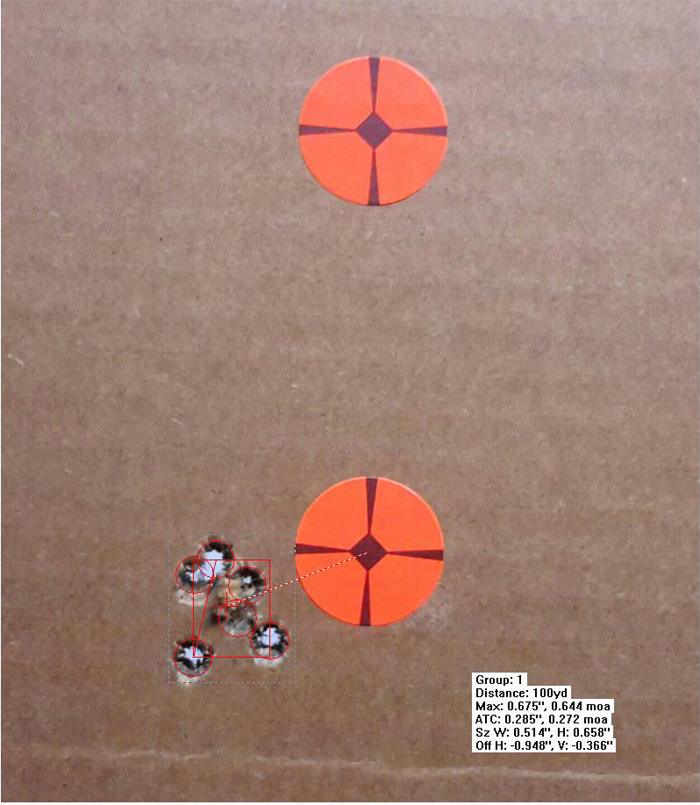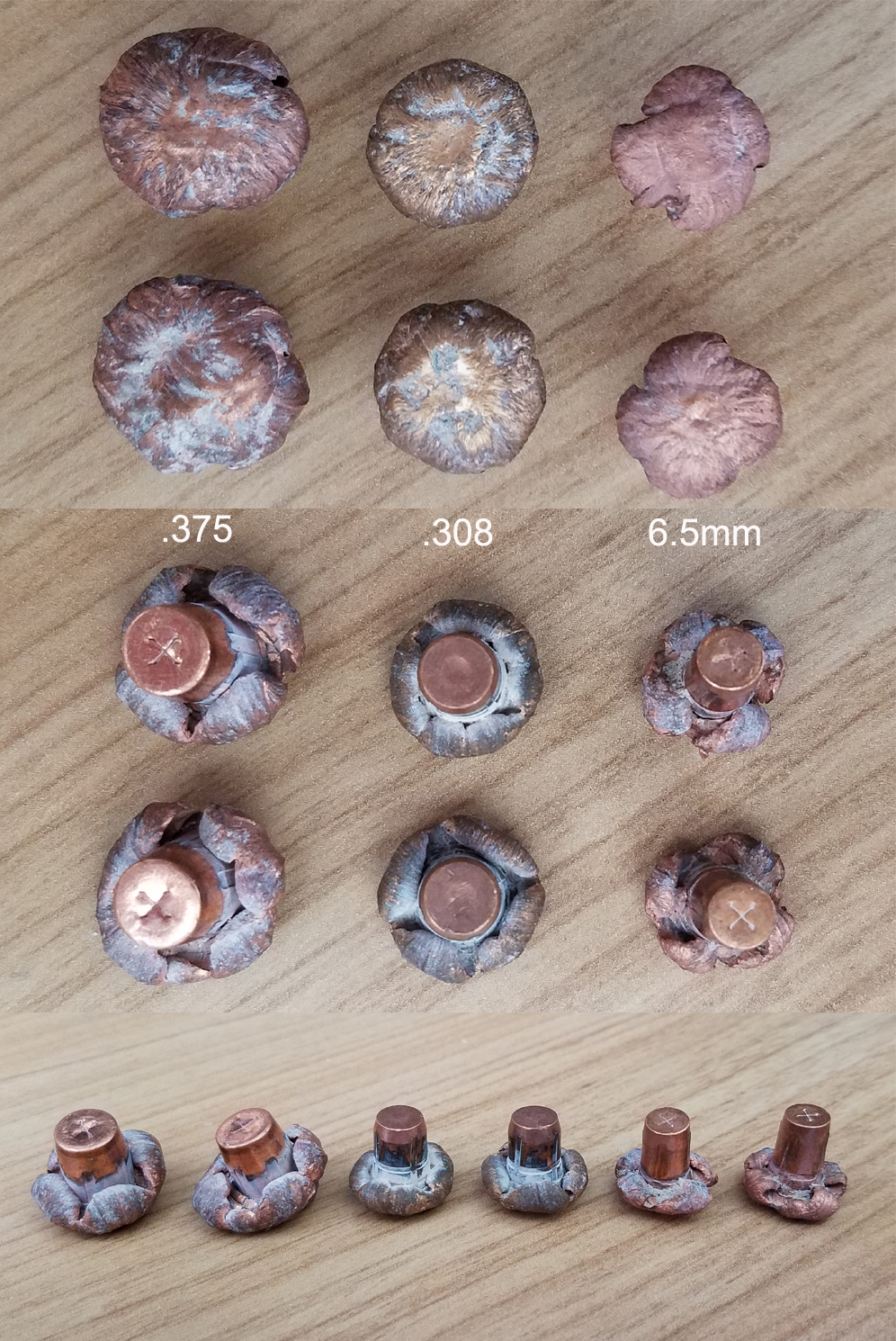Buck13
Member
I'm thinking of using Barnes TTSX or TSX in .270 Winchester. My choice of weight would be influenced by which will still be going fast enough to open up reliably at my limiting range (to be determined).



That was my thinking exactly.From what the writers have stated about the all copper X-bullets and their penetration/lack of weight loss in game animals, you should be able to go with 130's at normal .270 velocities and be good for elk on down.
I'd prefer to suffer less, practice more, and know my range limitations.

Which 6.5 cartridge was used for that test? Just curious.And some do that with magnum cartridges too. My go to hunting rifle for deer and elk is chambered in .375 H&H. I don't suffer while shooting it, in fact I enjoy shooting it, I practice a lot more than most and I know my range limitations (~ 600 yards). The .375 H&H is a good choice for me but my advice to anyone who asks me what they should use for hunting deer and elk is to shoot the biggest, fastest bullet of suitable construction that they can shoot well, and from a rifle/scope combination that they can "comfortably" carry for the duration and in the conditions in which they typically hunt. Bullet mass and speed buy margin and if you can shoot a magnum cartridge well then why on earth would you go smaller? The only thing you risk is the ire of numerous .270 Win shooters who are convinced that their choice is the best choice for everyone. The bullets from left to right are the Barnes 250gr TTSX, Federal 165gr Trophy Copper and Barnes 120gr TTSX all recovered from the 100 yard sand berm at my house. I've shot mule deer ranging from 203 yards to 460 yards using the Barnes 250gr and Federal 165gr.

Jmr40 thanks for the chart. I have shot TTSX for years but there have been times when the density of a lead bullet would have been advantageous for me.The bullets in calibers larger than .308 work better at lower speeds. Around 2000 fps at impact is as slow as I'd be comfortable with in any 22-30 caliber. That doesn't mean you have to go with the lighter bullets. Just run the numbers and figure out at which range you drop below 2000 fps and consider that the max range for that load. The copper bullets generally do fine at normal ranges out to 300 yards or a bit farther. Not a good choice for the guys who want to shoot at 500 yards or farther.
I "borrowed' the photos from Nosler's website comparing the Accubond on top with their copper bullet. The Barnes copper bullets perform about the same. You get expansion at 1800 fps. But not enough to make me happy.

Which 6.5 cartridge was used for that test? Just curious.
Jmr40 thanks for the chart.
